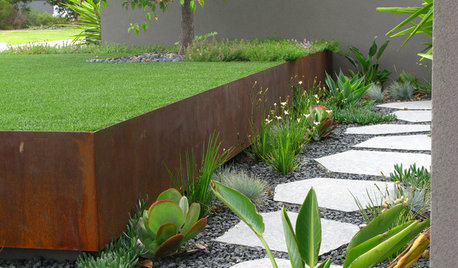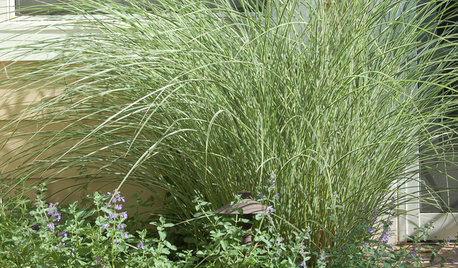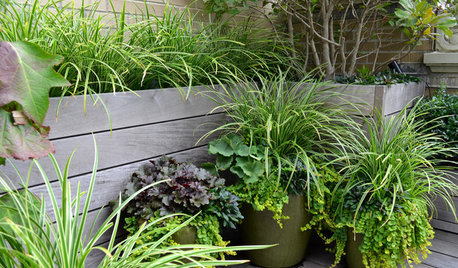Grass question
jimtnc
15 years ago
Related Stories

GARDENING GUIDESNo-Regret Plants: 5 Questions Smart Shoppers Ask
Quit wasting money and time at the garden center. This checklist will ensure that the plants you're eyeing will stick around in your yard
Full Story
SELLING YOUR HOUSE15 Questions to Ask When Interviewing a Real Estate Agent
Here’s what you should find out before selecting an agent to sell your home
Full Story
CURB APPEAL7 Questions to Help You Pick the Right Front-Yard Fence
Get over the hurdle of choosing a fence design by considering your needs, your home’s architecture and more
Full Story
LANDSCAPE DESIGN7 Questions to Ask Before Laying Stepping Stones
These broken-up pathways invite you to put a spring in your step — while adding functionality to the garden
Full Story
Design Dilemmas: 5 Questions for Houzzers!
Post Ideas for Landscaping for a Modern Home, Updating a Rental and More
Full Story
EXTERIORSCurb Appeal Feeling a Little Off? Some Questions to Consider
Color, scale, proportion, trim ... 14 things to think about if your exterior is bugging you
Full Story
GARDENING AND LANDSCAPING5 Smokin' Warm-Season Grasses
Beat the heat with beautiful grasses that help your landscape shine from summer through fall
Full Story
PLANTING IDEASCreate High-Impact Container Gardens With Grasses
When it comes to adding drama, texture and panache to a pot, these strappy species are hard to beat
Full Story
LANDSCAPE DESIGNIs It Time to Consider Fake Grass?
With more realistic-looking options than ever, synthetic turf can be a boon. Find the benefits and an installation how-to here
Full Story
INSPIRING GARDENSInside Houzz: A Waterfront Property Ditches the Grass for a Garden
New drought-tolerant plantings and outdoor gathering spaces help this California backyard take in the view without wasting space or water
Full Story



auteck
jimtncOriginal Author
Related Discussions
Bermuda grass question
Q
Karl Foerster feather reed grass questions for Zone 7
Q
Getting Rid of Quack Grass Question
Q
Fake Grass Questions
Q
auteck
jimtncOriginal Author
jimtncOriginal Author
jimtncOriginal Author
jimtncOriginal Author
auteck
jimtncOriginal Author
yankee_in_va
jimtncOriginal Author
auteck
jimtncOriginal Author
jimtncOriginal Author
auteck
auteck
jimtncOriginal Author
jimtncOriginal Author
auteck
jimtncOriginal Author
auteck
jimtncOriginal Author
auteck
jimtncOriginal Author
jimtncOriginal Author
auteck
jimtncOriginal Author
auteck
jimtncOriginal Author
auteck
auteck
jimtncOriginal Author
auteck
jimtncOriginal Author